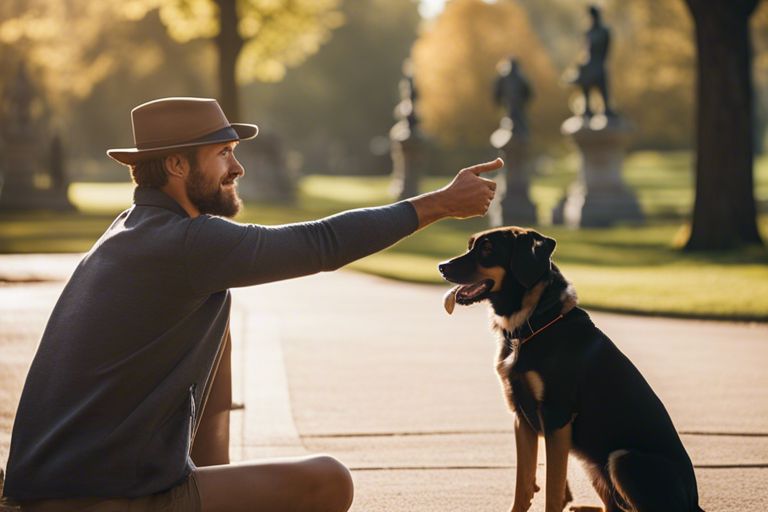With proper guidance and techniques, mastering dog training can lead to a well-behaved and obedient canine companion. Training your dog is not just about teaching them commands, but also about fostering a strong bond and mutual understanding. In this blog post, we will provide expert advice and valuable tips on how to effectively train your dog and address common behavioral issues. Whether you are a first-time dog owner or looking to improve your current training methods, this comprehensive guide will help you create a harmonious relationship with your furry friend.
Key Takeaways:
- Consistency is key: In terms of dog training, consistency is crucial. Make sure to set clear rules and boundaries for your dog, and always stick to them. This will help your canine companion understand what is expected of them.
- Positive reinforcement works best: Using positive reinforcement, such as treats, praise, and toys, is the most effective way to train your dog. Rewarding good behavior will encourage your dog to continue behaving well and strengthen your bond with them.
- Patience and persistence pay off: Dog training takes time and effort, so be patient and persistent. Remember that every dog is different and may learn at their own pace. Stay consistent in your training approach and don’t give up, as the rewards of a well-behaved canine companion are well worth it.
Understanding Your Dog
Canine Psychology: The Key to Effective Communication
Any successful dog training starts with understanding your furry friend’s psychology. Dogs communicate through body language, vocalizations, and behaviors. To effectively train your dog, you need to learn to interpret these signals and respond appropriately. By understanding your dog’s perspective and needs, you can establish clear communication and build a strong bond based on trust and respect.
Recognizing and Responding to Your Dog’s Needs
Any responsible dog owner knows that meeting their pet’s needs is crucial for a well-balanced and happy companion. From basic necessities like food, water, and shelter to mental stimulation, exercise, and social interaction, it’s imperative to recognize and fulfill your dog’s requirements. By addressing these needs, you can prevent behavioral issues and ensure a harmonious relationship with your canine companion.
Recognizing and responding to your dog’s needs goes beyond just providing imperatives; it also involves emotional and mental well-being. Dogs are social animals that thrive on companionship and mental stimulation. Regular playtime, training sessions, and quality time together are imperative for your dog’s happiness and overall well-being.
Basic Training Techniques
Establishing the Foundations: Obedience Training
To have a well-behaved canine companion, it is crucial to establish a strong foundation through obedience training. This fundamental training sets the tone for all future learning and ensures clear communication between you and your dog. Consistency, patience, and positive reinforcement are key when teaching basic commands such as sit, stay, come, and heel. Do not forget, practice makes perfect, so make sure to dedicate time each day to reinforce these important commands.
The Role of Positive Reinforcement and Rewards
Positive reinforcement is a powerful tool in training your dog. By rewarding good behavior with treats, praise, or toys, you are reinforcing the desired actions and encouraging your dog to repeat them. This creates a positive association with obeying commands and strengthens the bond between you and your furry friend. Do not forget, consistency is key when using positive reinforcement – always reward your dog immediately after they perform the desired behavior to reinforce the connection between the action and the reward.
Obedience training is not just about teaching your dog to follow commands; it is also about building a strong and trusting relationship with your pet. By consistently using positive reinforcement techniques and rewards, you are not only shaping your dog’s behavior but also fostering a deep bond based on mutual respect and understanding. Do not forget, patience and consistency are the foundations of successful obedience training, so stay committed and enjoy the journey of training your canine companion.
Advanced Training Strategies
Unlike basic commands, advanced training strategies require more focus, consistency, and patience. Developing a well-behaved canine companion involves a deeper understanding of your dog’s behavior and needs.
-
Addressing Behavioral Issues
Issue Solution Aggression Behavior modification techniques Separation anxiety Gradual desensitization training Excessive barking Positive reinforcement for quiet behavior -
Customizing Training to Your Dog’s Personality and Breed
Personality Training approach High energy Agility training and interactive play Shy or anxious Slow, gentle socialization techniques Herding breed Channel instinct into obedience tasks
Addressing Behavioral Issues
Addressing behavioral issues involves identifying the root cause of the problem and implementing targeted training methods to modify unwanted behavior. Whether it’s aggression, excessive barking, or separation anxiety, consistency and positive reinforcement are key in shaping a well-rounded and well-behaved canine companion.
Training to Your Dog’s Personality and Breed
Training should be customized based on your dog’s personality and breed characteristics. For high-energy dogs, incorporating agility training and interactive play can help burn off excess energy. Shy or anxious dogs benefit from slow, gentle socialization techniques to build confidence. Understanding your dog’s breed traits, such as herding instincts in breeds like Border Collies, allows you to tailor training to channel their natural tendencies into productive tasks.

Maintaining Progress and Dealing with Setbacks
Consistency in Training: Staying the Course
Now that you have started training your dog and have made progress, it is crucial to maintain consistency in your approach. Dogs thrive on routine and repetition, so it’s vital to stay the course and continue with the training methods that have been working for you. Consistency in training will help solidify the lessons learned and prevent any confusion for your dog.
Troubleshooting Common Problems and Solutions
Setbacks are a natural part of the training process, and it’s crucial to be prepared to address them effectively. Some common issues you may encounter include leash pulling, jumping on guests, or barking excessively. The key to overcoming these setbacks is to identify the root cause of the behavior and implement a targeted solution. For example, if your dog is pulling on the leash, you can try using a front-clip harness or practicing loose-leash walking techniques.
Dealing
Understanding the common problems that can arise during training will allow you to address them proactively and prevent them from derailing your progress. By staying observant and responsive to your dog’s behaviors, you can nip any issues in the bud before they become major setbacks. Remember to stay patient and consistent in your training approach, and don’t hesitate to seek guidance from a professional trainer if needed. By staying proactive and focused on solutions, you can navigate through setbacks and continue on the path to a well-behaved canine companion.
Specialized Training and Activities
Agility Training and Mental Stimulation
For an active and intelligent dog, agility training can be a fantastic way to provide mental stimulation and physical exercise. This specialized training involves navigating obstacle courses, jumping through hoops, weaving through poles, and more. Not only does agility training keep your dog physically fit, but it also enhances their problem-solving skills and strengthens the bond between you and your furry friend.
Preparing for Specific Scenarios: Travel, Children, and Other Pets
Other than basic obedience training, it’s necessary to prepare your dog for specific scenarios they may encounter, such as travel, interactions with children, and cohabitation with other pets. Teaching your dog how to behave around children, how to travel comfortably in a car or crate, and how to socialize peacefully with other pets can make life easier for both you and your furry companion. Consistent training and positive reinforcement will help your dog adapt to various environments and situations with ease.
Pets should be properly introduced to new family members, whether they have fur, fins, or feathers. Supervised interactions between your dog and children can help foster a respectful and gentle relationship. Additionally, when traveling with your pet, ensure they are comfortable in their carrier or seatbelt harness and accustomed to long journeys. By preparing your dog for various scenarios, you can ensure they remain well-behaved and safe in any situation.
Final Words
With this in mind, mastering dog training is necessary for having a well-behaved canine companion. By following expert advice and techniques, you can develop a strong bond with your dog and create a harmonious relationship based on trust and respect. Remember to be patient, consistent, and confident in your training methods to achieve the best results. Your dedication and effort will be rewarded with a well-behaved and happy dog that brings joy and companionship to your life. Keep practicing, stay committed, and enjoy the journey of training your furry friend to be the best companion possible.
FAQ
Q: What is the key to mastering dog training?
A: The key to mastering dog training is consistency. Dogs thrive on routine and repetition, so it’s important to establish clear expectations and stick to them. Consistent training will help your canine companion understand what is expected of them and reinforce good behavior.
Q: How can I effectively communicate with my dog during training?
A: Effective communication with your dog during training involves using clear cues and positive reinforcement. Dogs respond well to praise, treats, and encouragement, so be sure to reward good behavior promptly. Remember to keep training sessions short and focused to maintain your dog’s attention and motivation.
Q: What are some common mistakes to avoid when training a dog?
A: Some common mistakes to avoid when training a dog include using punishment or harsh methods, inconsistent training, and expecting too much too soon. It’s important to be patient, understanding, and to set realistic goals for your dog. Avoiding these mistakes will help create a positive training experience for both you and your canine companion.

